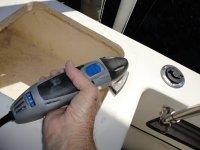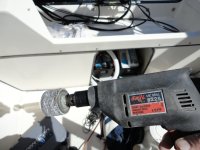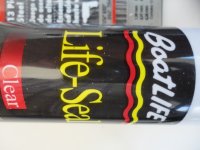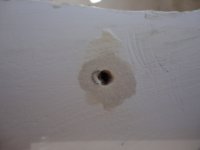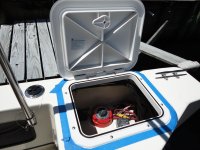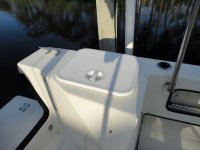The old "bottomless hole" :cry
Couple of thoughts (without being able to see it):
1) Although there is not room to reach in (with hands?) from the inspection-plate hole, could you reach over there with something like long tweezers? or even a flat piece of bar stock? If so, then I would try to get something flat/rigid/adhesive over the bottom of the hole. If you are a bit careful when you pot them from the top, then it doesn't need to be anything too strong.
2) There is also the method where you fold up something that naturally wants to unfold and become flat, and tie a light string/line/etc. through the center of it. Then push the folded piece down through the hole until it clears the bottom and "unfurls" below, at which point you pull it tight against the bottom of the hole with the string (which is coming out the top of the hole), and then fill the hole, then later cut off the string.
For this one, if you could even get a stick or something in to reach the area from the inspection plate, you could help the patch to unfurl or stick in place.
3) I've read about people inflating something in or beneath a hole (say if you could get a balloon in there), or using but I've never used that method, and obviously if you inflated it in the hole column itself, then you would not be potting part of the hole. Clay or wetted out glass shoved down from above would probably create the same issue. Since there can be water under the cockpit sole (from what I have read), I would want to pot it completely.
When you wet out the hole (with neat epoxy), if you let that tack up (green stage) before going back in with the thickened stuff, then the thickened will tend to "stick" to the initial wet-out layer. This may help to keep it from "falling heavily" onto whatever you block off the bottom of the hole with.
Sunbeam :hot
PS: One last thought, if none of the above will work: You could go ahead with the wet-out, let it tack up, and then go in with slightly-extra-thick thickened epoxy and just accept that some will bulge out or possibly even drop beneath the hole. This would not be my first choice as it just seems messy and who wants an uninvited blob in the bilge (although maybe you could let it tack up and then get it out with a stick or something from the access plate hole).

